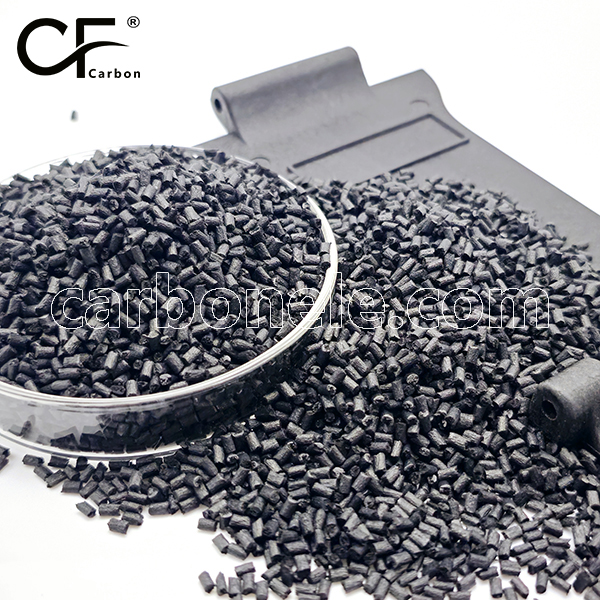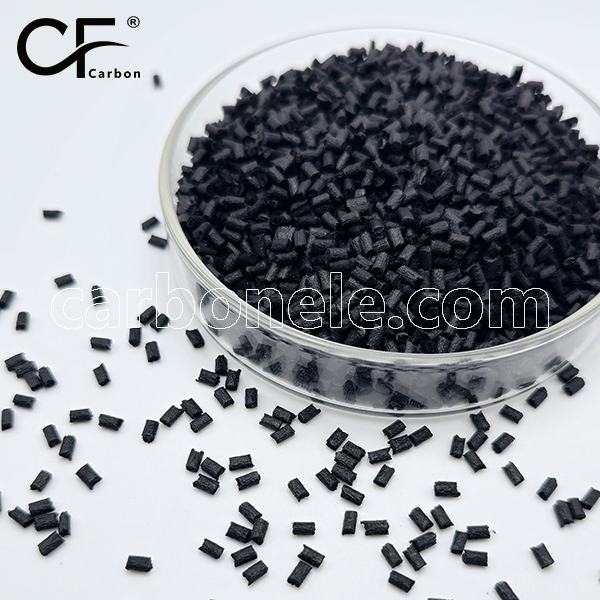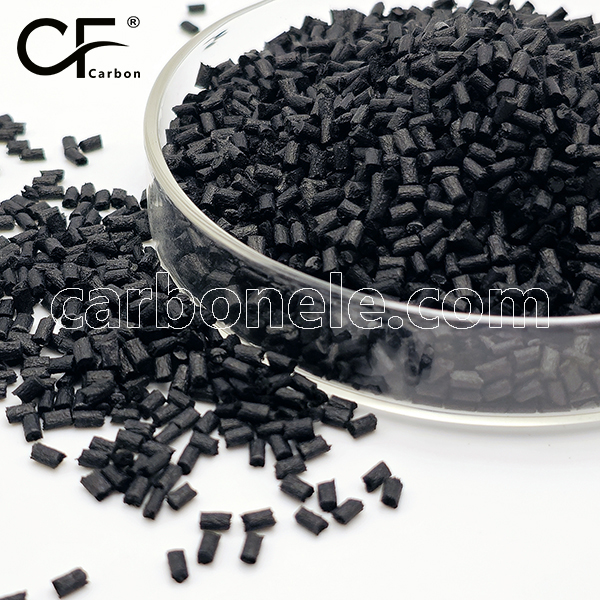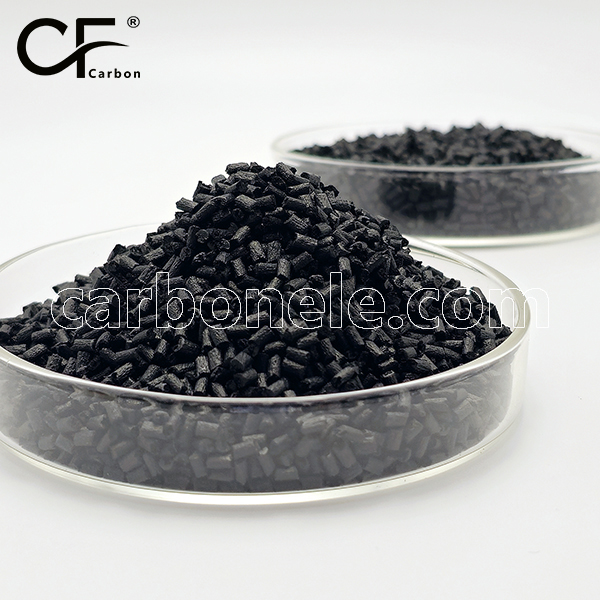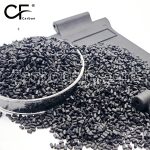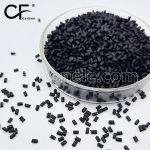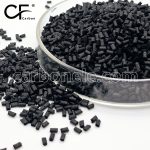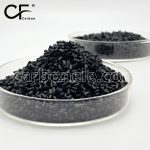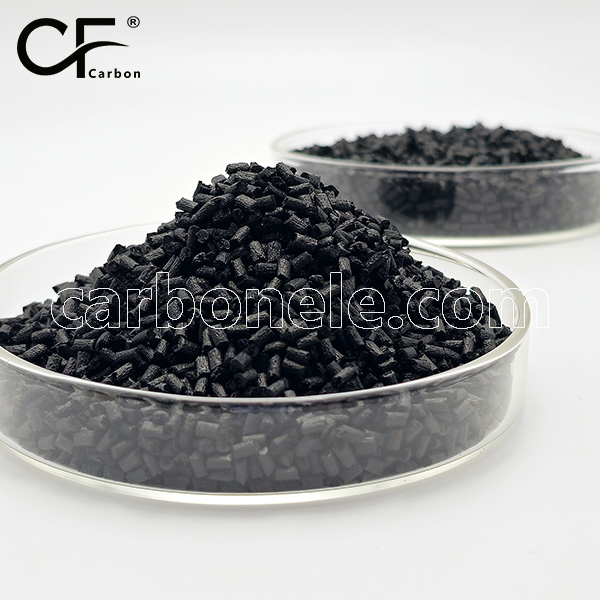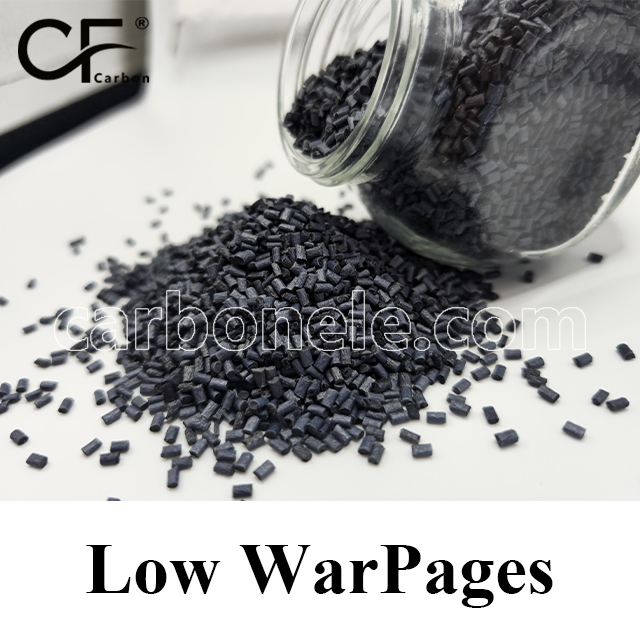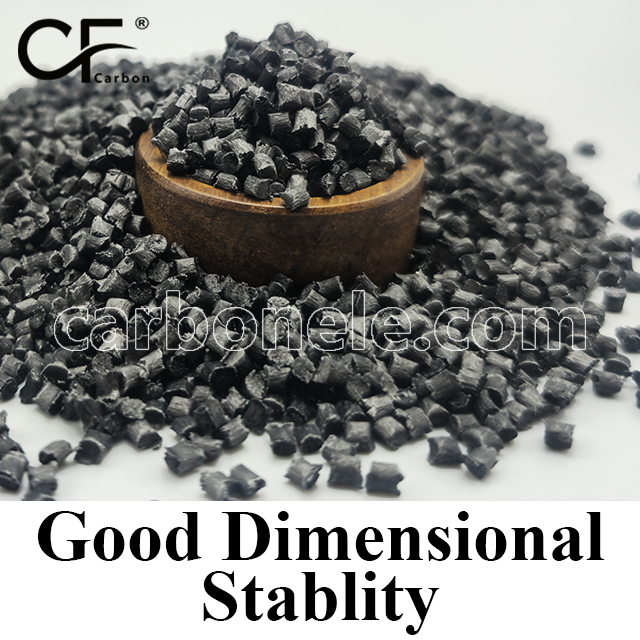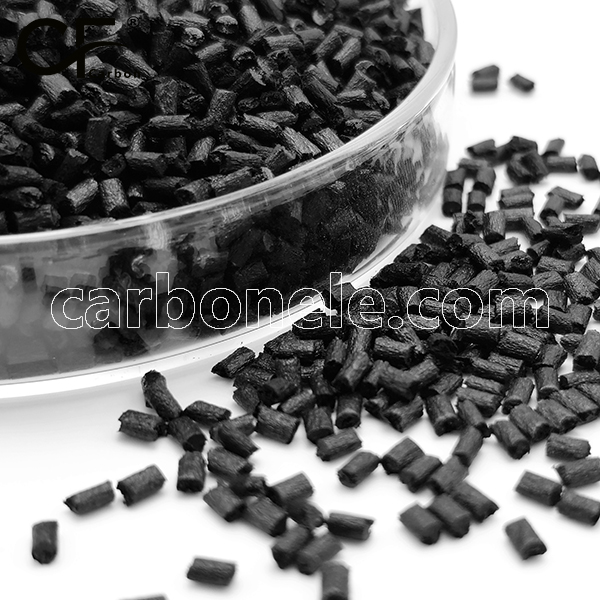
High Strength-to-weight Ratio CF40 PA66 for Agricultural Drone Blades
CF40 PA66 is the Optimal Material for Drone Blades:
✅ High strength-to-weight ratio (close to metal, 45% lighter) → Longer flight time & higher payload.
✅ Fatigue & chemical resistance → Ideal for intensive farming operations.
✅ High stiffness & low vibration → Stable flight, fewer failures.
✅ Injection molding & cost benefits → Mass production-friendly, lower manufacturing costs.
- Model: PA66-CF-BCA4
- Fillers: Chopped carbon fiber
- Free samples: ≤25kg
- Port: Xiamen
- MOQ: 100kg
- OEM: Acceptable
Agricultural drone blades require a combination of high strength, lightweight, fatigue resistance, and chemical corrosion resistance. CF40 PA66 (40% carbon fiber-reinforced nylon 66) stands out as an ideal material due to its superior performance.
1. High Strength & Lightweight – Enhances Flight Endurance & Payload Capacity
- 40% carbon fiber reinforcement significantly improves PA66’s mechanical properties:
- Tensile strength: Increases from ~80 MPa (pure PA66) to 200-240 MPa (comparable to some aluminum alloys).
- Flexural modulus: Rises from ~3 GPa (pure PA66) to 12-15 GPa, close to glass fiber-reinforced composites.
- Density: Only 1.4-1.5 g/cm³, ~45% lighter than aluminum (~2.7 g/cm³) and ~80% lighter than steel (7.8 g/cm³).
- High strength-to-weight ratio (Specific Strength):
- CF40 PA66 achieves 140-170 MPa·cm³/g, outperforming 6061 aluminum (~130 MPa·cm³/g).
- Weight reduction can improve drone flight time by 10-20% (depending on blade design).
2. Superior Fatigue Resistance – Suitable for High-Frequency Operations
- Agricultural drone blades endure 5,000-8,000 RPM and millions of cyclic loads during operation.
- Fatigue limit (10⁷ cycles) of CF40 PA66: 50-70 MPa, far exceeding unreinforced PA66 (~20 MPa).
- Compared to metals (e.g., aluminum), PA66 has better damping properties, reducing vibration-induced fatigue failure risks.
3. Chemical Corrosion Resistance – Withstands Pesticides & Fertilizers
- PA66 exhibits strong chemical resistance against:
- Common pesticides (e.g., organophosphates, herbicides).
- Fertilizers (e.g., urea, ammonium salts).
- Humid environments (water absorption ~2.5%, but carbon fiber reduces moisture impact).
- 40% carbon fiber minimizes hygroscopic deformation, ensuring dimensional stability (<0.5% deformation in humid conditions).
4. High Stiffness & Low Vibration – Improves Flight Stability
- Flexural modulus of 12-15 GPa (close to glass fiber composites but lighter) reduces blade deformation at high speeds.
- Carbon fiber’s high stiffness minimizes blade flutter, enhancing flight stability (reducing GPS positioning errors).
- Compared to metal blades, CF40 PA66 has higher damping, reducing noise by 3-5 dB (beneficial for farm operations).
5. Environmental Adaptability – Weather Resistance & Longevity
- Operating temperature range: -40°C to +120°C (short-term tolerance up to 150°C), suitable for extreme farm conditions.
- UV resistance: Can be enhanced with additives, extending service life to 5+ years (vs. 2-3 years for standard plastics).
Compared to metals or pure carbon fiber, CF40 PA66 offers the best balance of performance, weight, cost, and manufacturability, making it the top choice for agricultural drone blades.
Manufacturing & Cost Efficiency
1. Injection molding: CF40 PA66 allows complex blade geometries with short cycle times (<2 minutes per part). 2.Total cost is 60-70% lower than pure carbon fiber and more economical than metal machining, making it ideal for mass-produced agricultural drones.
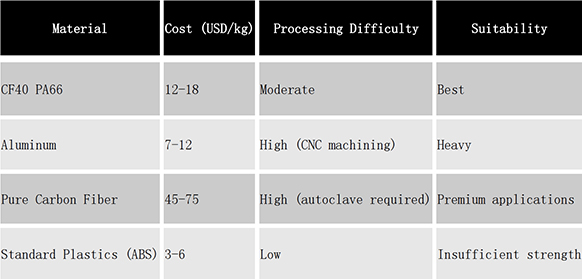
Surface Resistivity Comparison
Conductors < 10⁵ Ω/sq. Antistatic Materials 10⁵ ~ 10¹² Ω/sq. Insulators > 10¹² Ω/sq. Static-Dissipative 10⁶ ~ 10¹¹ Ω/sq. *Key Influencing Factors Humidity: Increased moisture can reduce resistivity (e.g., in polymers). Temperature: Affects carrier mobility (↑ heat may lower semiconductor resistivity). Surface Contamination: Dust/oils alter readings significantly. Additives: Carbon black, metallic fillers can lower resistivity. *Applications Electronics: Antistatic materials (10⁶–10⁹ Ω/sq) prevent electrostatic discharge (ESD). Aerospace: Composites must control resistivity to avoid charge buildup. Medical Devices: Insulating materials (>10¹² Ω/sq) ensure patient safety. *Examples Polypropylene (PP): ~10¹⁶ Ω/sq (excellent insulator). Carbon Fiber Composites: 10³–10⁶ Ω/sq (static dissipation). ESD Flooring: 10⁶–10⁹ Ω/sq.
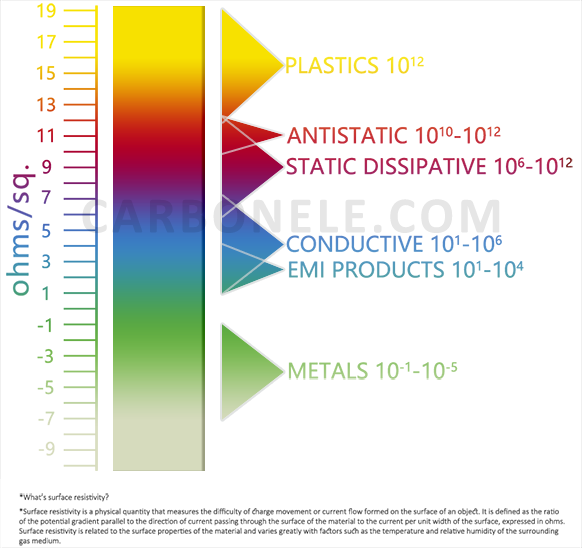
Get to Know Carbon Fibers
The table presents key performance data of carbon fiber grades. T300, with a tensile strength of 3530 MPa and a tensile modulus of 230 GPa, has a relatively low tensile elongation at break of 1.5% and a body density of 1.76 g/cm³. As the grade increases, for example, T700S shows an enhanced tensile strength of 4900 MPa compared to T300, while maintaining the same tensile modulus but with a higher elongation at break of 2.1%. T800S and T1000G both have a tensile modulus of 294 GPa, and their tensile strengths are 5880 MPa and 6370 MPa respectively. T1100G stands out with the highest tensile strength of 7000 MPa and a tensile modulus of 324 GPa. Generally, with the increase in product grade, the tensile strength and modulus tend to rise, while the density remains relatively stable around 1.8 g/cm³.
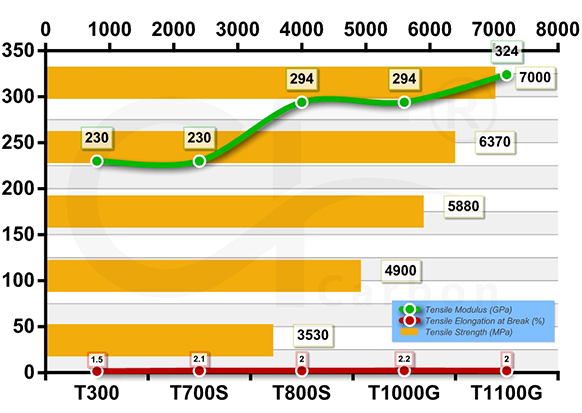
How to Buy?
If you want to obtain information such as product specifications, performance, and price, choose a suitable product according to your own needs. Meanwhile, you can ask the manufacturer to provide samples for testing to ensure that the material meets your usage requirements. If you are interested in purchasing this composite material, please contact the manufacturer Carbon (Xiamen) New Material directly.
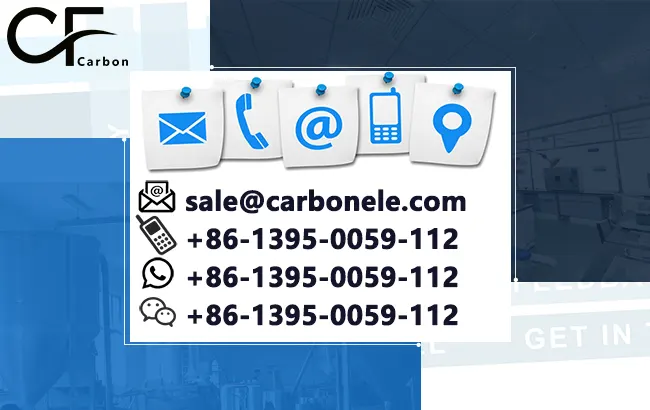
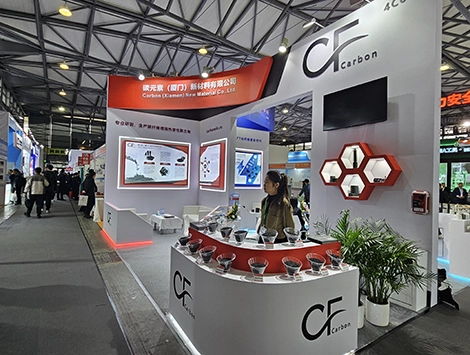

Frequently Asked Questions
Carbon (Xiamen) New Material Co., Ltd. aims to provide buyers with "one-stop" worry-free high-quality services. Here you can find all information about carbon fiber engineering plastics. If you still have questions, please send us an email for consultation!
-
How can I contact the manufacturer of a product that interests me?
When you find a product you are interested in, you can contact the manufacturer directly by sending an email and we will get back to you as soon as possible.
-
How do I find the products that interest me?
All you need to do is enter the keyword, product name in the search window and press the Enter key on your keyboard. Your search results page will then be displayed. You can also search within the product category pages on the home page. Each category is divided into subcategories, allowing you to refine your search and find products that interest you.
-
Where will I find a buying guide?
Please contact our after-sales service directly and we will provide you with a comprehensive operating guide.
-
What are CF Reinforced Thermoplastic Composites?
CF Reinforced Thermoplastic Composites are materials where carbon fibers are incorporated into a thermoplastic matrix. They combine the strength and stiffness of carbon fibers with the processability and recyclability of thermoplastics. For instance, they are used in automotive parts like bumper beams.
-
What are the benefits of CF Reinforced Thermoplastic Composites over traditional composites?
The key benefits include faster production cycles, easier recyclability, and better impact resistance. They also offer design flexibility. An example is in the manufacturing of consumer electronics casings where complex shapes can be achieved more easily.
-
How are CF Reinforced Thermoplastic Composites processed?
Common processing methods include injection molding, extrusion, and compression molding. Injection molding is widely used for mass production. For example, in the production of small components for the medical industry.
-
What industries use CF Reinforced Thermoplastic Composites?
They are utilized in aerospace, automotive, medical, and sports equipment industries. In aerospace, they can be found in interior components. In the medical field, they might be used in prosthetics.
-
How does the carbon fiber content affect the properties of the composites?
Higher carbon fiber content generally leads to increased strength and stiffness but may reduce ductility. A moderate content is often balanced for specific applications. For example, a higher content might be preferred in structural parts of a race car.
-
What are the challenges in using CF Reinforced Thermoplastic Composites?
Challenges include higher material costs, complex processing equipment requirements, and ensuring uniform fiber dispersion. Issues with adhesion between the fibers and the matrix can also arise. An example is in achieving consistent quality in large-scale production.








